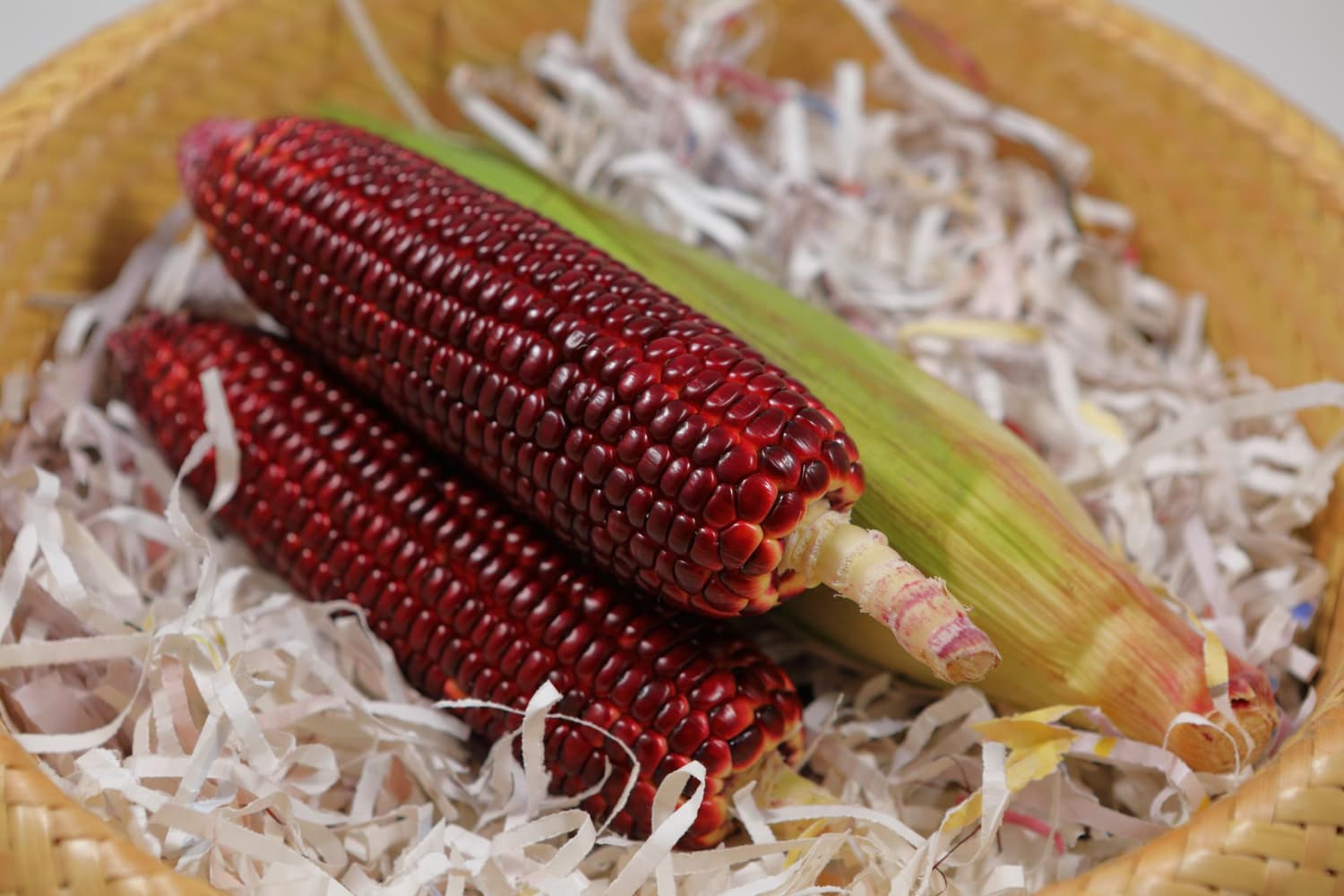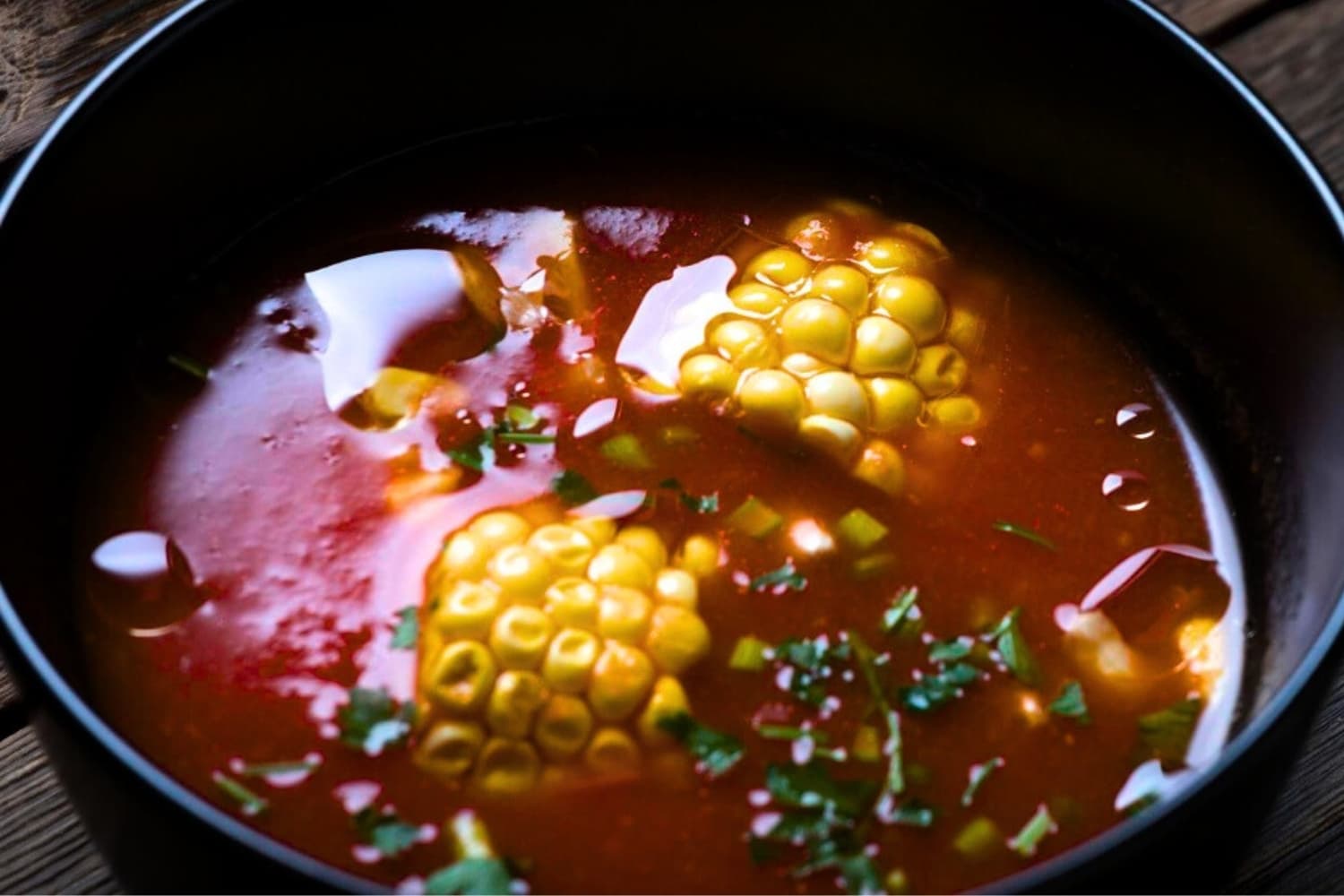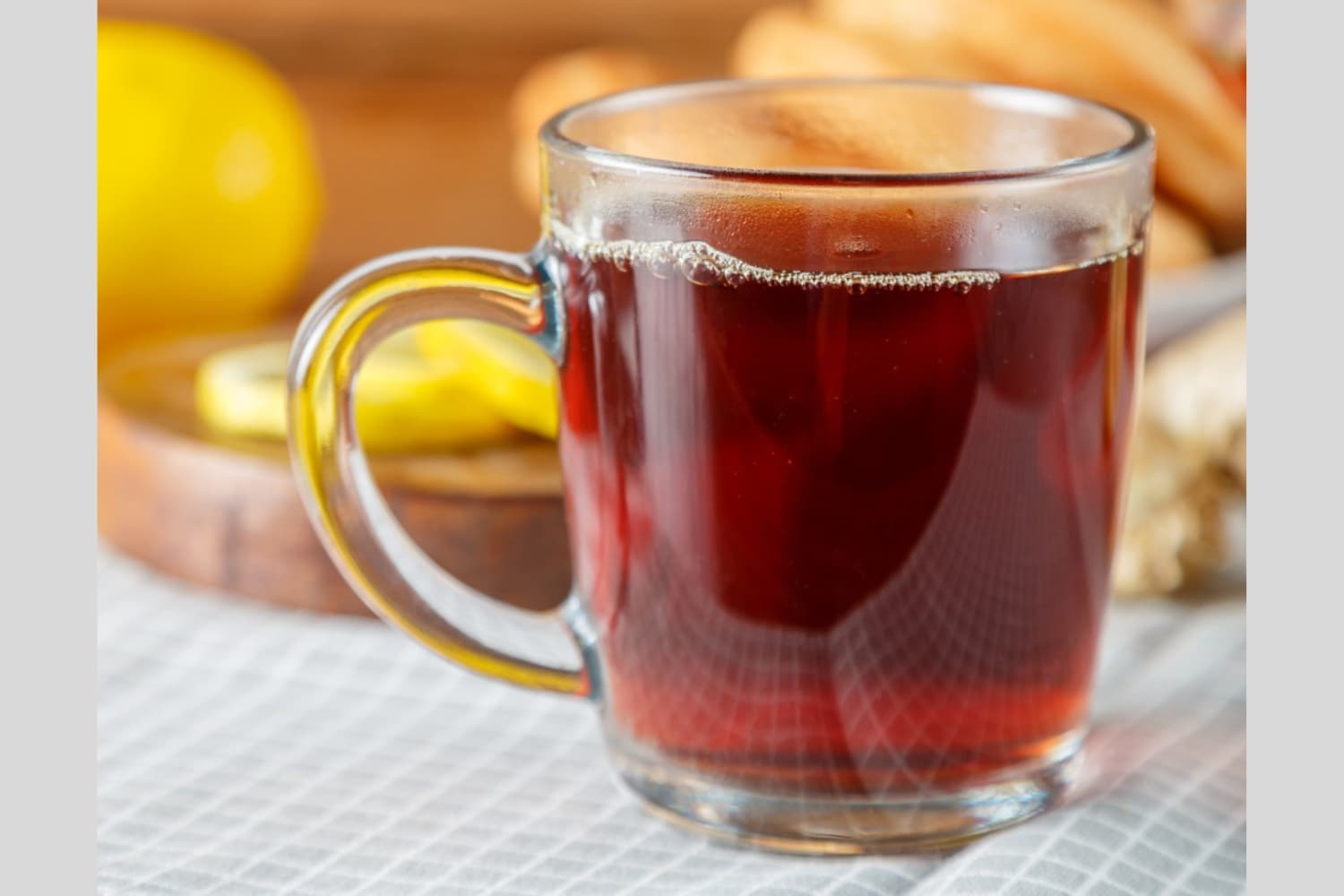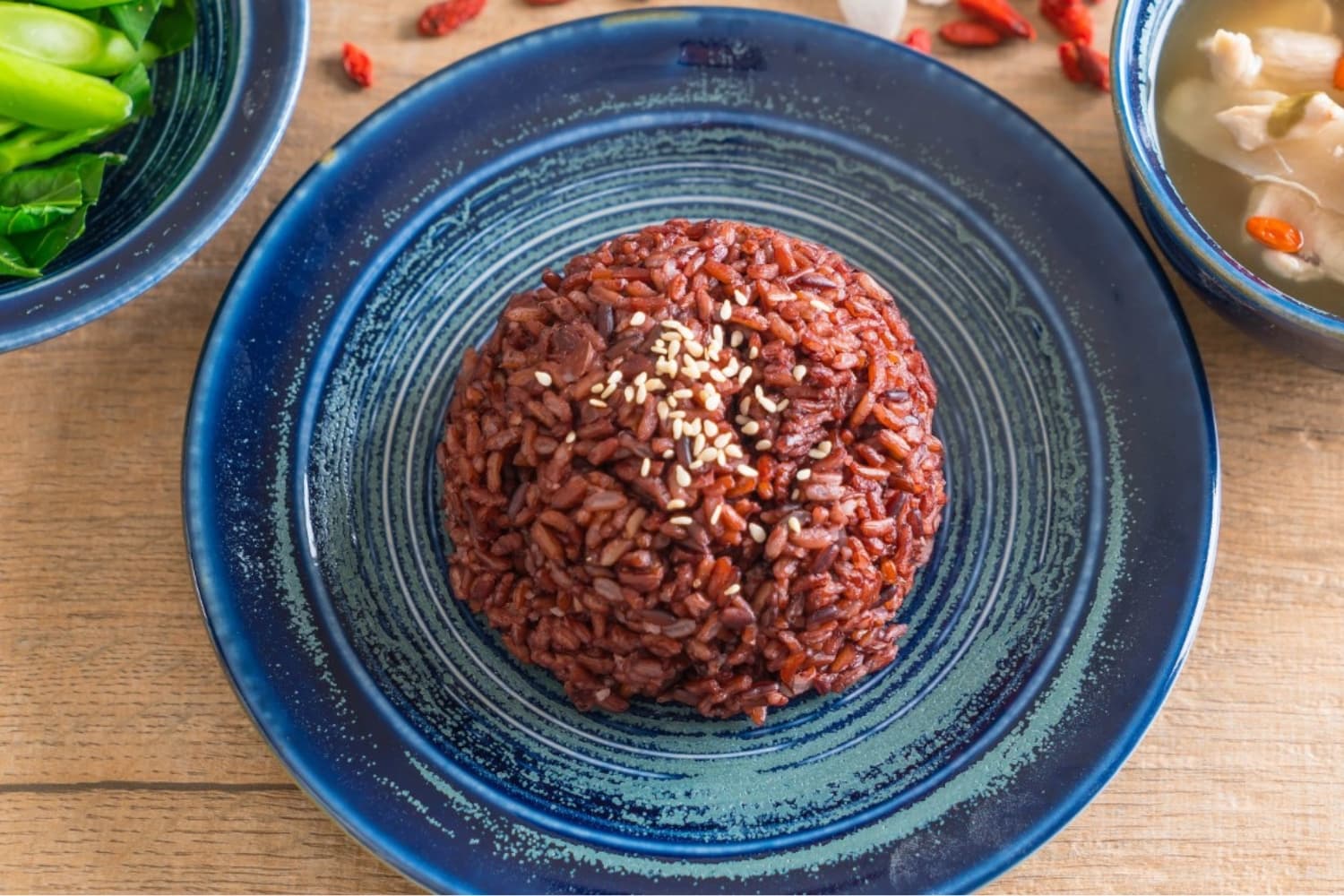Presenting our newest harvest: Red Corn
𝗪𝗵𝗮𝘁’𝘀 𝗿𝗲𝗱 𝗮𝗹𝗹 𝗼𝘃𝗲𝗿 𝗮𝗻𝗱 𝗯𝗲𝘀𝘁 𝗲𝗮𝘁𝗲𝗻 𝗿𝗮𝘄?
Red corn! You can also eat it steamed, mixed with rice, or as a soup or tea. (Recipes below).
It’s like regular corn, except with deep red kernels. The redness however is only at the top. Red corn is yellow halfway through and all the way to the cob. Unlike what you may be thinking, red corn is not yellow corn dyed red!
Our corn (it’s delicious btw) is grown using an approach called Regenerative Agriculture. Re-what? Think of it as sustainable food production system that grows healthy crops, restores soil health, and encourages biodiversity.
Red dissolves in hot water
The colour comes from a pigment called anthocyanins. These are antioxidants found in fruits like cherries, plums, pomegranate, and grapes, and vegetables such as brinjals, red cabbage and purple cauliflower.
Red corn’s anthocyanins are water-soluble flavonoids, meaning it turns water purple to pinkish depending on pH levels and concentrations.
In hot water, red corn becomes yellow-ish. Less colour doesn’t mean less nutrients. Speaking of which, here’s what you can expect with each crunchy bite.
Benefits of red corn
Anthocyanins have strong antioxidant properties, which can help neutralize the body’s harmful free radicals. Free radicals are unstable molecules that can cause oxidative stress, linked to aging and various chronic diseases, including heart disease, cancer, and neurodegenerative disorders.
Here’s how it helps improves overall health:
- Reduces anti-inflammatory effects
- Anthocyanins have been shown to have anti-inflammatory effects in the body. Scientists think Chronic inflammation plays a role in the development of many diseases, including heart disease. By reducing inflammation, anthocyanins may help lower the risk of these conditions.
- Improves cardiovascular health.
- Anthocyanins can help improve blood vessel function, reduce blood pressure, and lower levels of LDL (bad) cholesterol; all factors associated with a lower risk of heart disease.
- Improves Brain Health
- There is growing evidence to suggest that anthocyanins may have neuroprotective effects, meaning they could help protect against age-related cognitive decline and neurodegenerative diseases such as Alzheimer’s and Parkinson’s disease.
- And finally, Cancer Prevention.
- More research is needed. For now, studies suggest that anthocyanins may have potential anti-cancer effects, ie by helping inhibit the growth of cancer cells, induce apoptosis (programmed cell death) in cancer cells, and prevent the formation of new blood vessels that makes tumours grow.
Red corn are enjoyed everywhere for its sweet, nutty, and earthy taste. We think you’ll love it too. Let us know what you think below and follow us on FB and IG for regular updates.
Sources:
- Anti-inflammatory effects. https://pubs.rsc.org/en/content/articlelanding/2017/fo/c7fo00449d/unauth
- Cardiovascular Health. https://www.sciencedirect.com/science/article/pii/S0002916522045804?via%3Dihub
- Brain Health: https://www.mdpi.com/2076-3921/9/5/451
- Cancer Prevention. https://onlinelibrary.wiley.com/doi/abs/10.1002/mc.21974
Updated April 2024
Recipes

-
- Husk corn, remove silk, wash
- Steam 3 minutes, enjoy
Steamed Red Corn

- Husk corn, remove silk, wash
- Break cob in half if desired
- Boil cobs with traditional soup ingredients, enjoy
Red Corn Soup

- Wash silks, boil 5-8 minutes
- Strain silks out, chill liquid
- Add lemon juice or evaporated milk, enjoy
Red Corn Silk Lemon Tea or Bandung

- Husk corn, remove silk, wash
- Break cob in half if desired
- Put cobs into rice before boiling
- Boil, enjoy
Natural Red Rice
What people say
First time eating
I love corn and didn’t know what to expect with the red variety. I was told it was sweet, crunchy and could be eaten raw. Bought a pack at Jaya Grocer Starling, slowly peeled away the husks, removed its silky hairs and took a bite. Sooooo good!
Sedap dimakan begitu saja
My mother-in-law was baffled we were eating it raw. When she finally gave it a try, she burst into song!
Less crunchy but sweet!
A bit of discolouration when cooking it. It is better to steam with the husk but then it has a husk smell. The bites of the red corn is less crunchy than the usual yellow corn, but it is definitely sweet.
What about you?
Frequently Asked Questions (FAQ)
Q: What is red corn?
A: Red corn is beautiful sweet corn variety that has naturally red kernels.
Q: Why is the corn red?
A: The plants naturally produces a red pigment called anthocyanin which gives the kernel skins, cobs, and corn silk a beautiful scarlet colouration.
Q: What is anthocyanin?
A: Anthocyanin is a form of natural antioxidant, which has anti-inflammatory properties, prevents heart disease, and may slow down spread of cancer cells in the body.
Q: How does red corn compare to yellow corn?
A: Red corn is sweeter than yellow corn, has 3 times more antioxidants, and the natural colour makes an attractive dish.
Q: Is red corn different than purple corn?
A: Red corn is different than purple corn. Most purple corns are a waxy variety, which means they cannot be eaten raw. Our red corn is a sweet corn variety, which means they can be eaten fresh like a fruit.
Q: How to fully extract anthocyanin from the corn?
A: Anthocyanin breaks down when exposed to high heat (80°C) for more than 3 minutes. So boiling, steaming, microwaving, stir frying the corn will cause the red pigments to be released from the kernels. Some chefs deliberately boil the corn for a long time to make a beautiful natural red food colouring.
Q: Do other vegetables have anthocyanin?
A: Yes. Dark coloured fruits and vegetables such as red okra, red amaranth spinach (bayam), and red long beans have rich anthocyanin contents in their cells. Hence, when cooked at high heat for more than 3 minutes, they also lose their colour and nutrition.
Q: How to preserve the anthocyanin while still enjoying the corn?
A: Eat our corn fresh! Our corn is sweet and juicy when harvested, it can be eaten raw like a fruit. Alternatively, steam, blanch, boil, or roast the corn for 3 minutes only to preserve most of the anthocyanin, while unlocking more sweetness from the kernels.
Q: Is our corn organically grown?
A: Yes. We do not use any chemical fertilizers or pesticides in our farms. We are also certified under myOrganic by Jabatan Pertanian Malaysia. In addition, we adopt regenerative agriculture practices which go beyond standard organic practices.
Q: What is regenerative farming?
A: Regenerative farming is the art and science of building healthy soil, healthy plants, and healthy people. This is achieved with practices such as the use of no-till, cover crops, native biodiversity, and in-situ composting. As a result, our farms do not even need to rely on store bought organic fertilizers, but our plants are grown using pure nutrition from the soil and ecosystem.